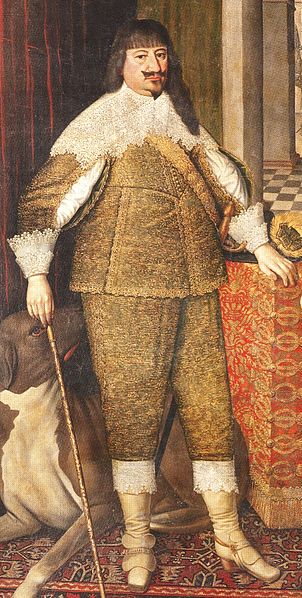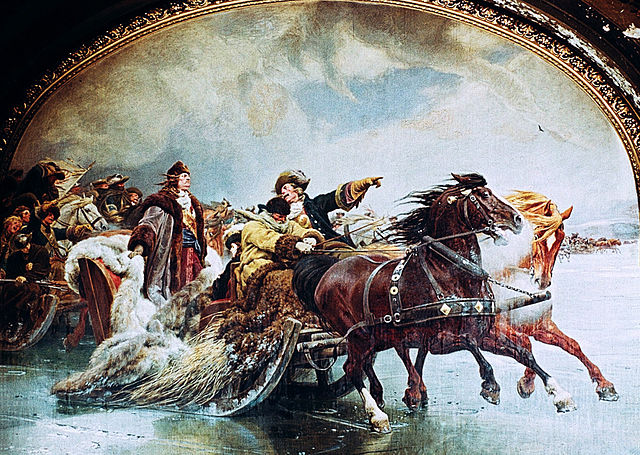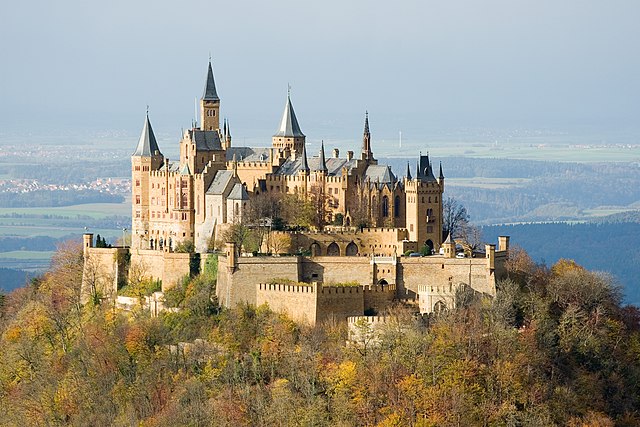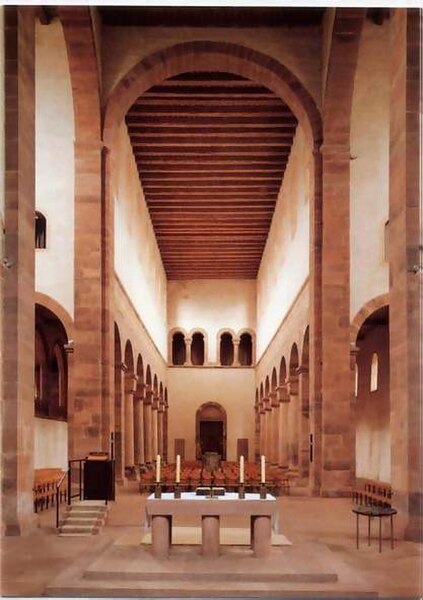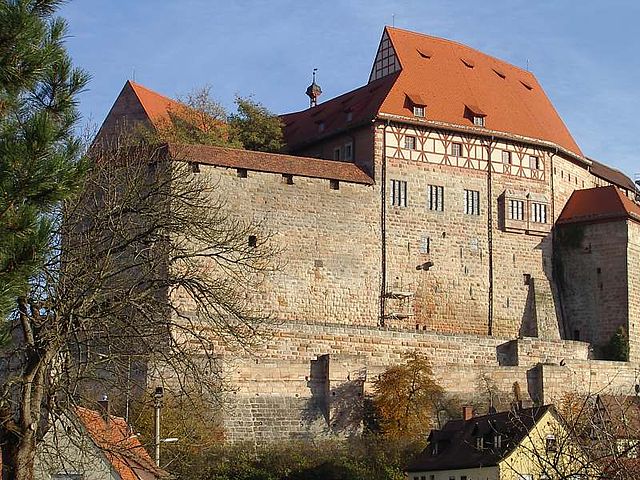Brandenburg-Prussia is the historiographic denomination for the early modern realm of the Brandenburgian Hohenzollerns between 1618 and 1701. Based in the Electorate of Brandenburg, the main branch of the Hohenzollern intermarried with the branch ruling the Duchy of Prussia, and secured succession upon the latter's extinction in the male line in 1618. Another consequence of intermarriage was the incorporation of the lower Rhenish principalities of Cleves, Mark and Ravensberg after the Treaty of Xanten in 1614.
A 19th century allegory visualizing the emergence of Brandenburg-Prussia through the marriage of John Sigismund, Margrave of Brandenburg to Duchess Anna of Prussia.
George William, Elector of Brandenburg
Uniforms of the Brandenburg-Prussian army in 1698
Great Sleigh Drive (1678):Frederick William pursues Swedish troops across the frozen Curonian Lagoon; fresco by Wilhelm Simmler, ca. 1891
The House of Hohenzollern is a formerly royal German dynasty whose members were variously princes, electors, kings and emperors of Hohenzollern, Brandenburg, Prussia, the German Empire, and Romania. The family came from the area around the town of Hechingen in Swabia during the late 11th century and took their name from Hohenzollern Castle. The first ancestors of the Hohenzollerns were mentioned in 1061.
Hohenzollern Castle, near Hechingen, was built in the mid-19th century by Frederick William IV of Prussia on the remains of the castle founded in the early 11th century.
Alpirsbach Abbey, founded by the Hohenzollerns in 1095
Nuremberg Castle (the Emperor's castle, left, and the Burgrave's castle, right)
Cadolzburg Castle near Nuremberg (from 1260 seat of the Burgraves)


